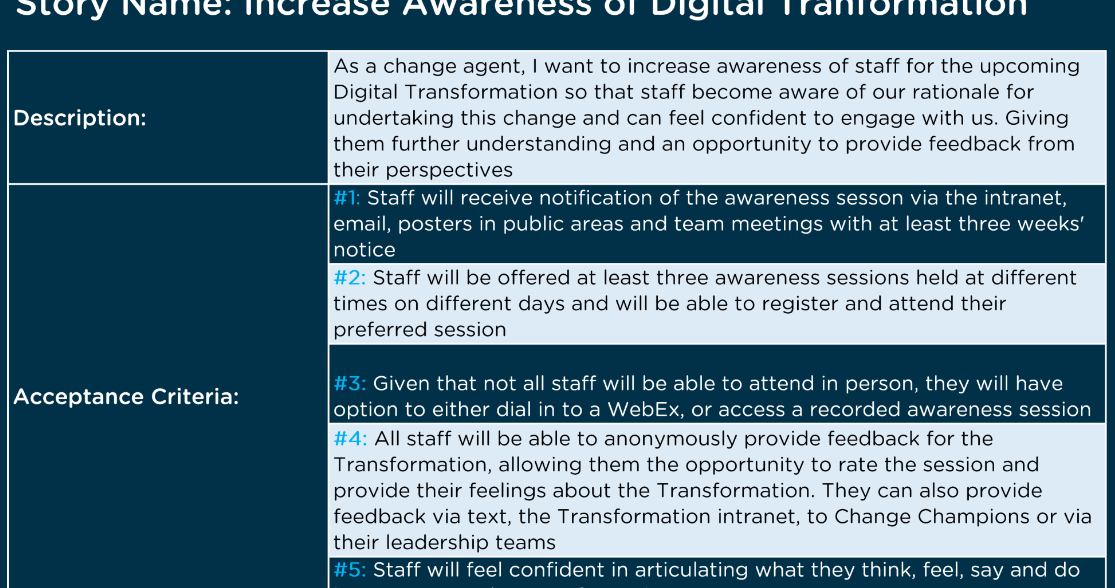Is Agile Relevant to Change Managers? (Here’s One Way to Make it Work)

One of the biggest challenges faced by today’s change managers is the increasing pressure to use the Agile model...
Agile is popular because it tackles initiatives by breaking them into iterative segments, offering a continuous improvement approach. Maybe not such a bad idea, considering that we’re operating in a volatile and unpredictable external environment.
But it’s not as easy to do as it is to simply say, “Go Agile!” Change management is a human-centred discipline that requires more rigor than IT projects.
Let’s explore how Agile and change management could work.
Different types of change
Change events vary from simple to major. Here’s a quick overview of each:
- Developmental change – simple to implement improvement-driven change, such as increasing sales and efficiencies or team skills development.
- Transitional change – moving from current state to future state, such as reorganisations or new product and service offerings. This transition is simple to manage because people aren’t impacted at a deeper personal change level, regarding mindset, values, and identity.
- Transformational change – the most challenging type of change as it is organisation-wide, taking place over a long period of time (often unknown at the start). Its purpose is to change the organisation’s underlying corporate strategy, processes, and/or technology, requiring a people and culture change.
A challenge for some change managers is that the fast pace and nature of an Agile approach means the change process itself must also change, especially when it comes to long term uncertain-future-state transformational change.
How Change Managers can use Agile
A standard change process requires these 3 things:
- Communicating intent.
- Establishing clear actions to bring about the change.
- Assessing the results/success of the change actions.
So, one way that change managers could use Agile is through its Tools Change Intent Model and User Stories. Let’s call this People Change Intent. Instead of one large, predetermined change process, it can be broken down into many smaller intents that are independent of each other by design.
Using User Stories to guide us, we can really get into the human side of each change intent – how it will impact the person and how that person will measure their satisfaction and achievement of the desired result. We’re able to determine quickly and easily whether the right actions have been taken and modify them if not.
Applying a People Change Intent User Story Framework
The standard user story format is also made of 3 parts: the story name, description, and acceptance criteria.
The description will specify who will be affected by the change (by their role or employee persona), what the change will be, and the reason for the change (what value or improvement the change is expected to bring them).
The acceptance criteria sets out ways to validate whether the change was implemented successfully.
Here’s an example of a People Change Intent User Story to demonstrate it in action.

Ready to try Agile for a change?
Applying Agile to change management could create a continuous improvement approach, enhancing the success of each change event. However, it also requires change managers to be more flexible and adaptable with their strategies and plans without sacrificing the essentials. You could experiment with Agile for a small change event to see how it works in action.
This is just 1 of the 10 challenges facing change managers in 2022. We are well connected with industry leaders in this space and often meet to discuss challenges and crowdsource solutions to these problems. If you are interested in joining our next discussion, contact us at marketing@talenza.com.au.